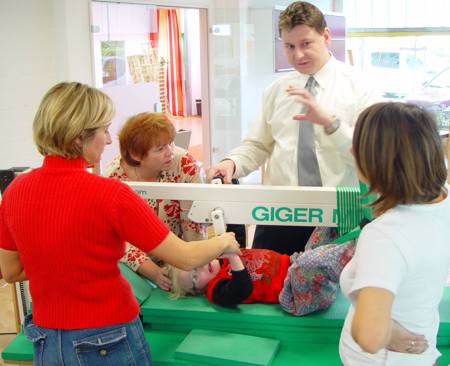|
Cerebral Palsy (CP)
Cerebral Palsy (CP) is a term used to describe a group of
disorders affecting body movement and muscle coordination. The
medical definition of CP is "a non-progressive but not unchanging
disorder of movement and/or posture, due to an insult or anomaly of
the developing brain."
Visualization of baby`s brain development process Skin (pink),
brain surface (white) and myelination process (green and red) brain
surface (white) and myelination process (green and red).


Development of the brain starts in early pregnancy and continues
until about age three. Damage to the brain during this time may
result in CP. This damage interferes with messages from the brain to
the body, and from the body to the brain.
The
effects of CP vary widely from individual to individual. At its
mildest, CP may result in a slight awkwardness of movement or hand
control. At its most severe, CP may result in virtually no muscle
control, profoundly affecting movement and speech.
It is
very important, that physical therapy begins in the first few years
of life, soon after the diagnosis is made. Physical therapy programs
work toward two important goals: preventing the weakening or
deterioration of muscles that can follow lack of use (called disuse
atrophy) and avoiding contracture, in which muscles become fixed in
a rigid, abnormal position.
Contracture is one of the most common and serious complications of
cerebral palsy. Normally, a child whose bones are growing stretches
the body's muscles and tendons through running and walking and other
daily activities. This ensures that muscles will grow at the same
rate. But in children with cerebral palsy, spasticity prevents this
stretching and, as a result, muscles do not grow fast enough to keep
up with lengthening bones. The resulting contracture can disrupt
balance and trigger loss of previous abilities. Physical therapy
works to prevent this complication by stretching spastic muscles.
For example, if a child has spastic hamstrings (tendons located
behind the knee), the therapist and parents should encourage the
child to sit with the legs extended to stretch them.
The goal
of neuro therapy is to improve the child's motor development. All
these goals of physical and neuro therapy are united successfully in
the instrument GIGER
MD® medical device. Studies have
documented its very high value.
back to the top
|
![]()
